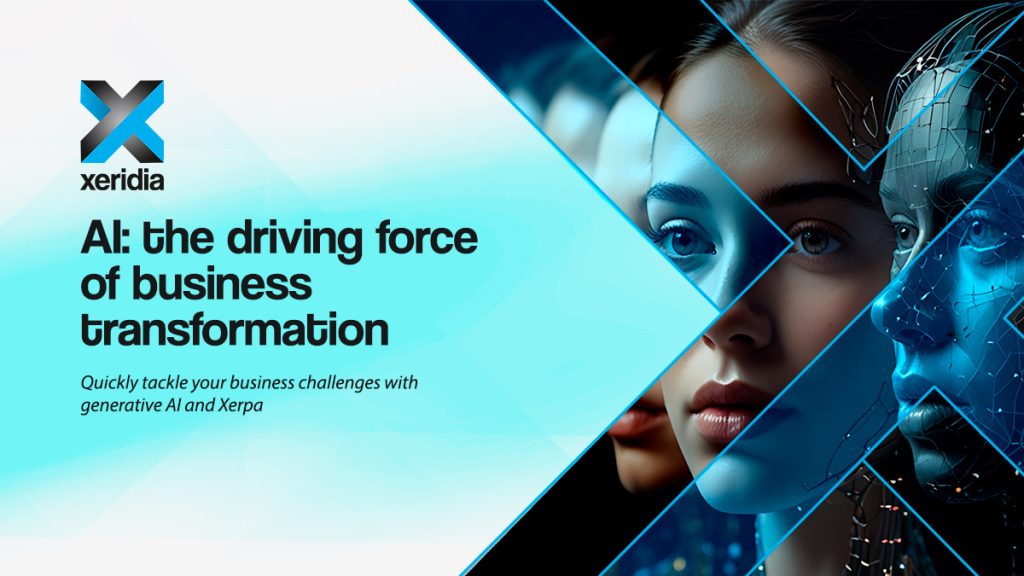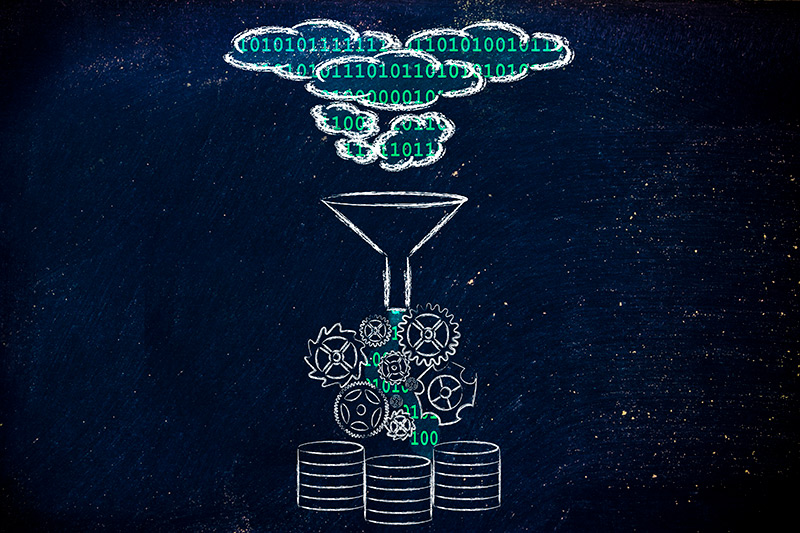
Artificial intelligence, AI, and GenAI are now part of everyone’s vocabulary, whether technical or not. It’s a consequence of the digital era, much like the internet, software development, and Big Data. Technology drives change, and executives who understood it as part of a strategy and integrated it into their roadmap didn’t get left behind.
We now have the possibility for machines to handle the most repetitive, tedious, or time-consuming tasks. Having an AI co-pilot by our side enhances our human capabilities, allowing us to focus on what sets us apart: critical thinking, ethics, empathy, and creativity. Welcome to the fourth revolution, the intelligent revolution.
An example of AI in action
Every two years, we create more data than it has ever existed before that point in time. We deal with enormous volumes of data scattered across different formats and languages. This is a recurring scenario, leading to inefficiencies and a lack of real perspective within companies when making informed decisions. A challenge many CIOs and CTOs face.
Xerpa is a chatbot that functions as a virtual assistant powered by generative artificial intelligence (GenAI).
What makes it unique?
First and foremost, its ability to access and process internal data, providing responses based on an organization’s own information. Unlike other chatbots, Xerpa doesn’t search the internet; instead, it connects to multiple sources of information: documents, Confluence pages, Jira tickets, presentations, Excel sheets, source code repositories, audio, video, document management systems, and more. Thus, when a user asks a question, Xerpa searches these sources and returns precise answers based on the company’s internal data.
With access to all a company’s internal information, security is key. When a user asks the chatbot a question, Xerpa only searches authorized sources for that user and shows the origin of the response. If the user doesn’t have access to a specific project, file type, or department, Xerpa won’t provide an answer, ensuring data privacy and security.
Through AI, Xerpa helps businesses improve operational efficiency, with decisions based on highly precise and complex data. This results in greater competitiveness and efficiency, as teams are freed from tedious tasks to focus on higher-value activities.
Can you imagine solving complex queries without having to go through dozens of documents or spending hours on it?
With Xerpa, this is possible. Instead of spending hours manually gathering information from videocalls, dashboards, emails, or technical documentation, you can ask specific questions, even about certain projects, and Xerpa will respond within seconds.
Here are some examples of queries across different sectors:
- Project Management and Planning
“Provide a detailed report in English on the fleet of vehicles used in @project_X for the construction of the Brazil Bridge, including intervention dates, investment, current status, and all reported incidents. Additionally, suggest alternatives for replacing these vehicles based on the content of meetings held in September.”
- Strategy and General Management
“Draft an executive summary in Spanish of all meetings related to @project_Y held in September, October, and November 2023. Include an analysis of the project’s performance to date, based on the minutes, video recordings, and shared notes.”
- Incident Analysis and Planning
“Based on the incident data from @Project2024, suggest contingency plans to prevent similar incidents in the future, considering the support tickets, incident reports, and meeting notes.”
- Software Development
“@Project2020 I need a Python function to calculate the remaining work hours for a Jira ticket.”
“@Project1 @Project2 I need you to generate the code to create an epic in Jira using Python, for each criterion to assess technical and economic solvency in a public tender.”
- Human Resources
“Generate a list in German of employees from the Berlin branch who joined after 2016 and have participated in @project5. Include an evaluation of their technical skills based on their records, performance reviews, certifications achieved, and any other relevant documents.”
Reasons not to miss out on the intelligent revolution
AI not only helps all teams to better achieve their goals, but it also impacts profits and, above all, cost savings. Here are some examples:
- Automating repetitive processes: such as accounting data entry, reducing errors and freeing up time.
- Predictive analysis: such as implementing predictive models to analyze market behaviors and improve marketing and sales decision-making.
- Supply chain optimization: forecasting demand to optimize inventories, removing defective parts, and reducing costs.
- Customer personalization: through recommendation systems that increase user satisfaction.
- Code generation: allowing developers to automatically generate code.
- Digital marketing optimization: for audience segmentation or campaign personalization.
- Fraud detection: identifying unusual patterns in financial transactions.
- Using chatbots: to extract value from multiple internal sources through a single point of access.
The power of artificial intelligence can transform massive amounts of data into concise, real-time answers.
Would you like to know more about Xerpa? Speak to our AI team!





